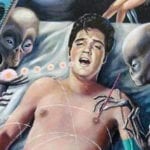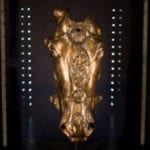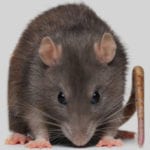 Music
Music  Music
Music  History
History 10 Less Than Jolly Events That Occurred on December 25
 Weird Stuff
Weird Stuff 10 Funny Ways That Researchers Overthink Christmas
 Politics
Politics 10 Political Scandals That Sent Crowds Into the Streets
 Weird Stuff
Weird Stuff Ten Bizarre Facts About The Doge Meme
 Our World
Our World 10 Ways Your Christmas Tree Is More Lit Than You Think
 Movies and TV
Movies and TV The 10 Coolest Stars to Set Sail on The Love Boat
 History
History 10 Things You Didn’t Know About the American National Anthem
 Technology
Technology Top 10 Everyday Tech Buzzwords That Hide a Darker Past
 Humans
Humans 10 Everyday Human Behaviors That Are Actually Survival Instincts
 Music
Music 10 Surprising Origin Stories of Your Favorite Holiday Songs
 History
History 10 Less Than Jolly Events That Occurred on December 25
 Weird Stuff
Weird Stuff 10 Funny Ways That Researchers Overthink Christmas
Who's Behind Listverse?

Jamie Frater
Head Editor
Jamie founded Listverse due to an insatiable desire to share fascinating, obscure, and bizarre facts. He has been a guest speaker on numerous national radio and television stations and is a five time published author.
More About Us Politics
Politics 10 Political Scandals That Sent Crowds Into the Streets
 Weird Stuff
Weird Stuff Ten Bizarre Facts About The Doge Meme
 Our World
Our World 10 Ways Your Christmas Tree Is More Lit Than You Think
 Movies and TV
Movies and TV The 10 Coolest Stars to Set Sail on The Love Boat
 History
History 10 Things You Didn’t Know About the American National Anthem
 Technology
Technology Top 10 Everyday Tech Buzzwords That Hide a Darker Past
 Humans
Humans 10 Everyday Human Behaviors That Are Actually Survival Instincts
10 Surprising Facts About The Haunted House Industry
With Halloween around the corner, haunted house season has begun. A spooky experience to share with friends, these haunted attractions have become a yearly staple for many who celebrate All Hallow’s Eve.
But, amid screaming around each corner or keeping your face set like stone to show your buddies how brave you are, have you ever wondered what goes on behind the scenes of your favorite scream shack? Not much is widely known about the haunted house industry. This list offers ten surprising facts about commercial haunted attractions in the United States.
10 Haunted Houses Are More Widespread Than Target
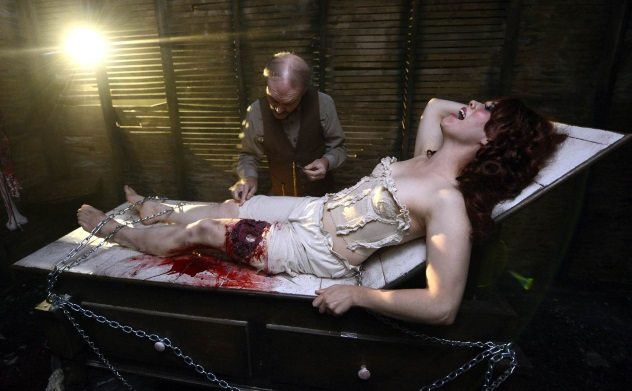
That’s right, there are more haunted houses in the United States than Target stores. A recent estimate from the Haunted House Association indicated that roughly 2,700 haunted attractions operate across the United States, while Target boasts a mere 1,800 locations.[1] Melissa Carbone quit a high-paying marketing job nearly a decade ago to invest in the creation of the LA Haunted Hayride, and in 2016, she expected a whopping 80,000 visitors to experience her haunt. She explained, “There is something about being scared in a safe environment that people are addicted to.”
Many professional haunters attribute the rise in popularity to the advance of technology and the production value of the whole experience. Michael Jubie, the owner of Headless Horseman Hayrides & Haunted Houses in New York state, uses professional makeup artists to bolster the realism of the creatures running at you in the dark as well as sets that rival Hollywood’s.
Steve Kopelman, designer of multiple haunted attractions, indicates that increasing the duration of the guest experience is also important to keep up with the times. A quick and creepy ten minutes used to be an acceptable length, but now, “Visitors today view a haunted house as an evening’s entertainment.”
9 Haunted Houses Are A $300 Million Industry
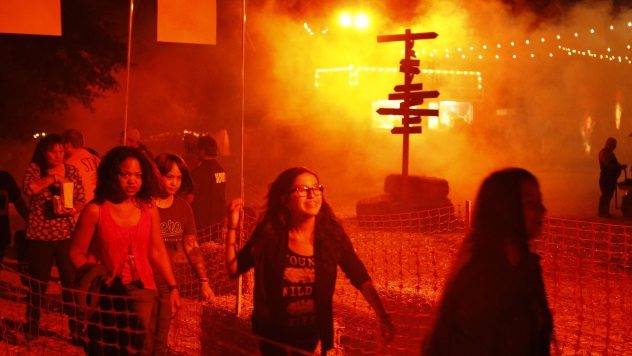
If done right, haunted attractions can be a very lucrative venture. According to the Haunted Attraction Association, haunted houses have become a $300 million industry.[2] In a 2013 survey conducted by the National Retail Federation, it was found that approximately 20 percent of Americans who celebrate Halloween planned to visit haunted attractions. Steve Kopelman estimated that big attractions can individually earn $2 or $3 million just from the Halloween season alone. That doesn’t include the haunts that remain open year-round.
For seasonal haunts, ticket prices range across the industry from $15 to $40. That’s for every single visitor to have the same basic experience. But some haunts offer VIP experiences on top of that for more money. One has to wonder if all the zombies, ghosts, and vampires can hold a candle to the horror of the sudden lightness of visitors’ wallets.
8 They Can Be Crazy Expensive To Operate
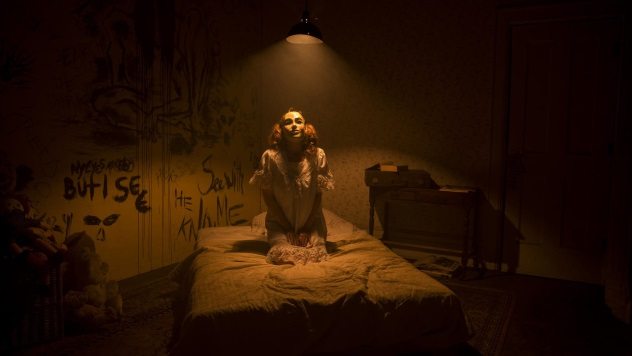
Haunted attractions are more expensive to operate than you might think. Jeff Schiefelbein, CEO of Sinister Pointe Productions, explains, “It’s getting so expensive that unless you have $100,000 to put into it and $30,000 into marketing, you are not going to make it.”[3] In 2016, Shiefelbein was considering closing his attraction after 20 years of operation, simply because the regulations had made it so difficult and stressful. Not all haunts can compete with the rising financial demands of the industry, which are due not only to upkeep but also to mounting insurance costs and “extensive government regulations.”
LA Haunted Hayride’s Melissa Carbone attributes her success to creating a unique product and experience for visitors. “Haunted houses are cool, but they are kind of a dime a dozen,” she elaborated. For her haunt, she was inspired by the traditional haunted hayrides she used to take as a child growing up in Connecticut.
But, she hasn’t limited herself to the LA hayride alone. Expansion and building on the visitor experience is key. Through her company, Ten Thirty One Productions, she invested in a second hayride, a haunted boat ride, horror movie screening parties, and haunted camping attractions in six major US cities. Clearly, this is an instance where you have to spend money to make money.
7 Most Haunted Houses Are Charitable Operations
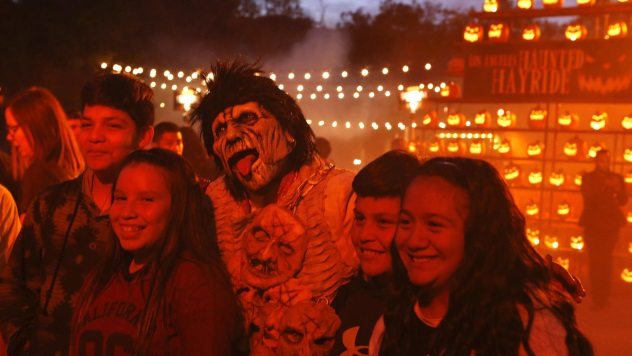
Many haunted houses aren’t motivated solely by profit. More than 80 percent of all US haunted attractions are run by a charity or donate up to 100 percent of their proceeds to one.[4] For example, the Hangman’s House of Horrors in Fort Worth, Texas, has raised over $1.7 million for local charities.
In Salem, Virginia, the Meek Manor haunted house is opening for the first time this year after a year of planning. Despite the fact that Meek Manor is a commercial, for-profit venture, they have teamed up with HopeTree Family Services, with the haunt located on the HopeTree campus. Upon their launch, a portion of their proceeds go toward aiding at risk children and youth. Mark Early, director of communications for HopeTree, said, “It will make a big difference and we hope other people will see, if these guys can get involved and do something to help the kids, then we can do that too.”
A more grassroots example is the Garber family home of Milton, Ontario. Each year, Mitch Garber helms the creation of a haunted house in his garage to benefit the Kidney Foundation of Canada. In 2013, after seeking medical help for what appeared to be food poisoning, Garber was diagnosed with kidney disease. Soon after, the Garber family were inspired to raise awareness of kidney disease and money for the foundation, which funds medical research. Today, overall proceeds from their annual event now total over $13,000 CAD. In July of this year, Garber received the Kidney Foundation of Canada Special Events Award of Excellence for his efforts.
6 Extreme Haunted Houses Are On The Rise
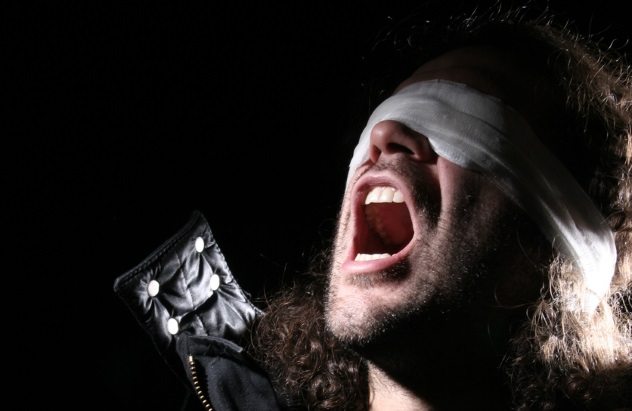
While the haunted houses of yesteryear relied on fake blood and jump scares, the new generation of haunts aims to increase the fear factor to extreme heights. “They’ve become aggressive. They’ve become an extreme sport,” says Timothy Haskell of Nightmare, a New York City attraction.
McKamey Manor in Tennessee is known as “the world’s most extreme haunted house,” where visitors can expect to eat strange things and have their personal boundaries breached. The heightened experience is in demand, with a waiting list of 27,000 people, according to Owner Russ McKamey. But, there are a few hoops these patient customers must jump through in order to gain entry, most notably a “doctor’s note, a background check, and a signed waiver.”
“If you last a minute there, you have my absolute and total respect,” visitor Brandon Vance said, after he paid to get in with a literal bag of dog food.[5] While last century’s haunts lasted about ten minutes, the full McKamey experience can go for hours. Vance lasted two and a half. “Something really weird medically happened to me. I couldn’t stand up anymore and [ . . . ] my equilibrium was off for some reason,” he said. According to Vance, they wrapped his head, except for his nose and mouth, with duct tape to add to the disorientation. He left the attraction with scrapes and bruises, though he was quick to add, “I never thought that my life was in danger. [ . . . ] They take very good care of you.”
Dr. Margee Kerr, a sociologist, helped design The Basement, a Pittsburgh haunt. She conducted surveys to tailor the experience to visitors’ expectations, explaining that, “A lot of customers wanted something more intense and engaging, and there was this desire for a more extreme experience.” It shows in the atmosphere that greets visitors, which includes partially nude performers invading their personal space and using physical contact, even going so far as to lick visitors’ necks!
5 Some Haunted Houses Have Serious Haters
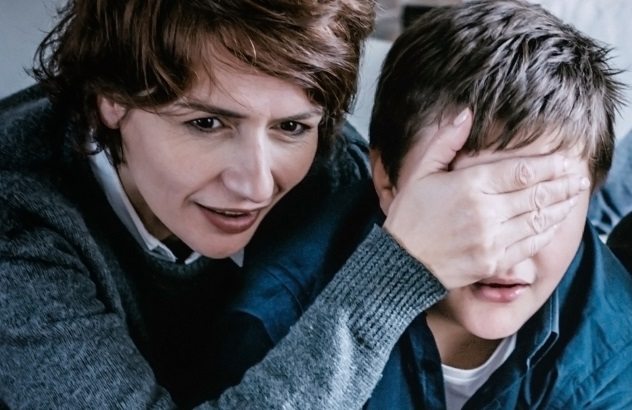
While McKamey Manor, for example, might be incredibly popular, it is also reviled by the local residents.[6] Neighbors are afraid to let their children outside for fear of them seeing horrific sights, even though they’re all staged. “All you hear is people screaming,” an anonymous neighbor elaborated. “You’re totally surrounded by residential homes,” they added, noting it was less the nature of McKamey’s venture of which they disapproved and more the location of it.
It certainly can be confusing for neighbors minding their own business to see something out of a horror movie right across the street and not call the police. One woman recounted seeing a screaming woman removed from a car on the property. Another described a woman being led down the driveway by a chain around her neck. “We do not want this in our town,” one neighbor exclaimed. “When you drive by this place, I’m not sure what my child is going to see.”
McKamey isn’t bothered by the effect his haunt is having on the locals. “It’s not torture,” he said, adding, “Some folks just don’t get it.”
4 Haunted Houses Are Bad For Your Heart
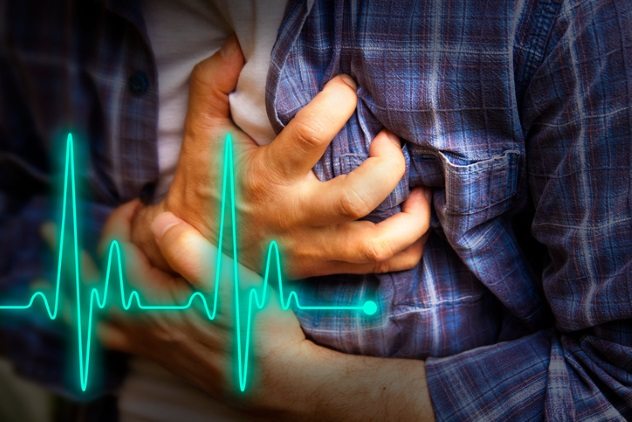
Last year, Today correspondent Jeff Rossen ventured into the Blood Manor haunted attraction of NYC wearing a heart monitor so that cardiologist Dr. Suzanne Steinbaum could analyze the effects on his body.[7] She explained that the experience sends hormones through your system that “can increase your heart rate, your blood pressure [and] make your respiratory rate go up.”
When actors jumped out at Rossen, Dr. Steinbaum observed that his heart rate jumped multiple times, past 146 beats a minute at one point, which would be “enough to make his body react as if he were exercising hard.” She indicated that while most healthy adults can handle this level of strain, for someone with an unhealthy heart, problems could arise, such as irregular heartbeat and even heart attack.
3 If You Die In One, Nobody Will Notice
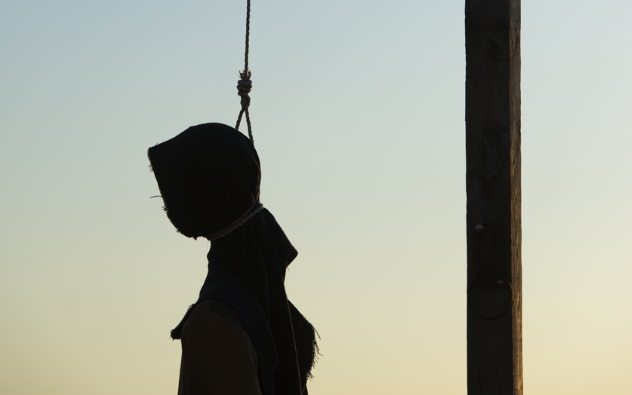
Unfortunately, due to the horrifying sights one can expect in a haunted house, it is easy to overlook a performer who is actually in trouble. On October 20, 1990, 17-year-old Brian Jewell accidentally hanged himself while working for a haunted hayride in Lakewood, New Jersey. Visitors found his body hanging from a gallows as the ride rumbled past his scare station. “He’s supposed to have the noose around his neck, but it’s not a noose that tightens,” described prosecutor James Holzapfel. Jewell would normally speak to the visitors passing by as he hung from the rope, but the tractor driver became concerned when he passed by and Jewell remained silent. That was when the tragic discovery was made.
Over a decade later in 2001, 14-year-old Caleb Rebh was also accidentally hanged as he volunteered for a haunted hayride in Michigan. Though visitors and other workers witnessed Rebh’s struggle with the noose around his neck, they thought it was part of the act, and no one offered assistance. He started the evening working at a station featuring a coffin but switched with another worker whose station included a skeleton hanging from a noose. Wanting to make his station as scary as possible for visitors, he replaced the skeleton with himself. As he let go of the rope, the branch holding the noose snapped back into place, tightening the rope to a fatal degree. When other workers finally realized Rebh was in trouble, they tried to resuscitate him, but it was too late.
Another decade after that, 17-year-old Jessica Rue accidentally hanged herself as part of a display, although luckily, she survived. On her second day working for Creepyworld in Fenton, Missouri, Rue was stationed in a room by herself with a bathtub and a noose hanging above. Somehow, Rue became tangled up with the noose, and it tightened around her neck. The exact details remain a mystery, as Rue spent the following three days in a coma and suffered memory loss upon waking. Despite lasting effects after the fact, she was able to return to school, make up the time she had lost, and graduate with her class on schedule.[8]
2 Haunted Houses Became A Pop Icon Because Of Disney
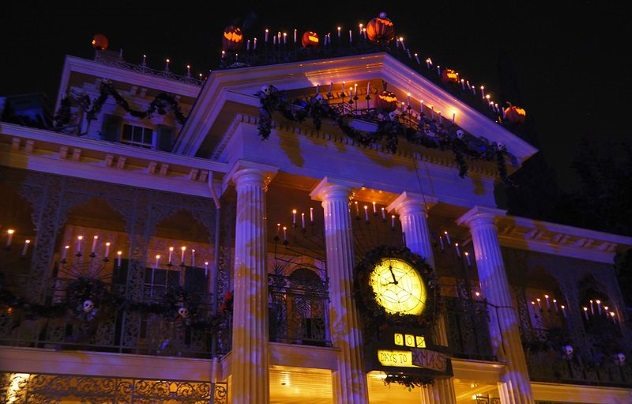
That last item was a little depressing, so let’s talk about Disney. “A lot of the professional haunters will point to one thing, and that’s Disneyland’s Haunted Mansion. It’s the start of the haunted attraction industry,” says Lisa Morton, author of Trick or Treat: A History of Halloween.[9] While the first haunt can be traced back to 19th-century London, the haunted house was launched into the iconic Halloween feature it is today by the opening of Disney’s haunted attraction in 1969.
Precursors included Madame Tussaud’s macabre wax figures, gory live theater productions, and a “ghost house” that opened in 1915 at the Liphook fairground. Basement haunted houses started to grow in popularity during the Great Depression as a way to entertain youth and keep them out of trouble. But when Haunted Mansion opened, the commercial haunted attraction truly became a cultural icon.
It saw instant success, reporting 82,000 visitors in a single day shortly after opening. Morton references the ride’s use of incredibly advanced technologies as the reason for its wild popularity, including an effect called “Pepper’s Ghost,” which uses “refracted light to project and shape ethereal images.” The haunted mansion’s Great Hall scene, in which dozens of ghosts dance around a ballroom, is still one of the more convincing haunt effects—48 years later.
1 Haunted House Success Is Determined By Science
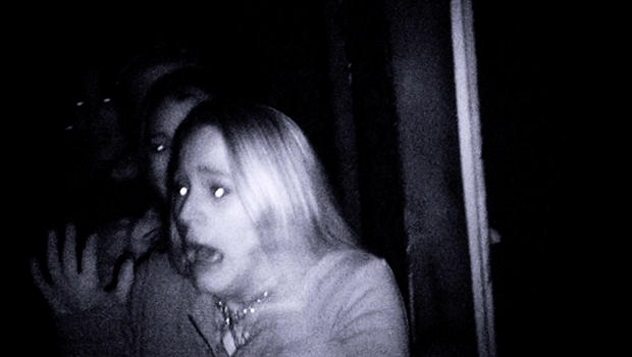
In helping to design The Basement, Dr. Margee Kerr wanted to craft a “scary experience, but one that was not going to trigger any trauma.”[10] For this, she needed to keep in mind the two main paths for sensory data through the brain. Dr. Joseph LeDeux of NYU coined them as the Low Road and the High Road.
The Low Road carries sensory data to the hypothalamus, the region of the brain that triggers the fight-or-flight reaction. This is the moment your brain first senses a threat, and you have an instant reaction. Your heart races, and your skin gets colder as the heart pumps blood away from it. The adrenal glands produce glucose, which helps your body prepare to flee, if necessary, and hormones such as dopamine are also released. This step is the biochemical equivalent of “OMG!”
The sensory data is then carried through the longer High Road to the hippocampus, which is involved in long-term memory. This part of the brain draws on these memories to provide context for what you’re seeing, helping your body understand that the haunted house poses no real threat. Triggering both of these paths is the greatest key to a successful and satisfying visitor experience. Dr. Kerr explained that it’s the job of a successful haunt to “trigger the first signal but also reinforce that no, this is actually not going to eat you.”
Robyn Watkins is a Canadian freelance writer. When offline, she writes and directs for her indie film company, Fruit Cellar Media. Visit her at www.fruitcellarmedia.com.
Get further into the Halloween spirit with 10 Creepy Rituals We Once Used To Celebrate Halloween and 10 Sinister Halloween Horror Stories That Really Happened.

